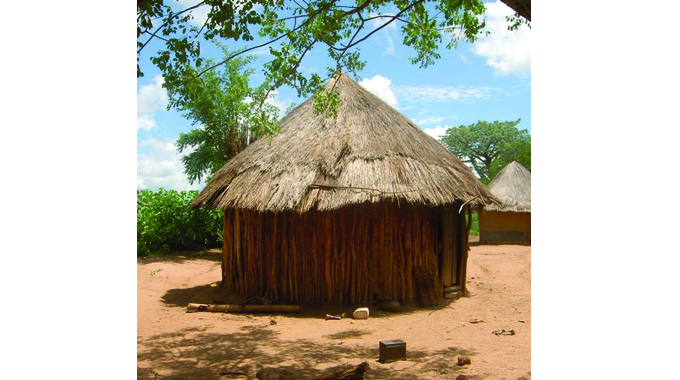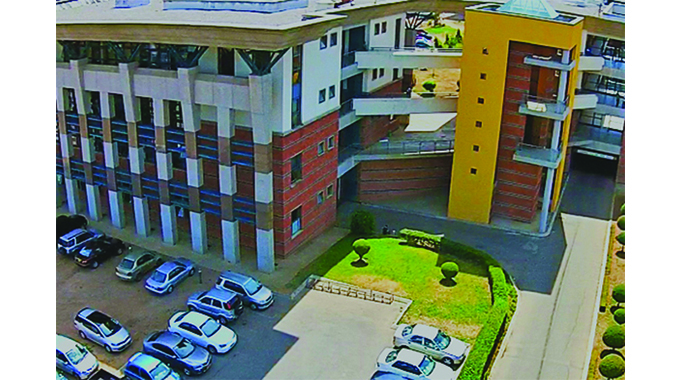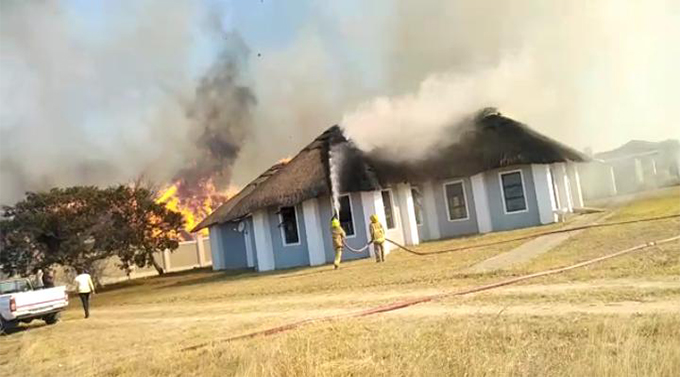Rural folks build modern houses

Nqobile Tshili, Chronicle Reporter
MORE than 80 percent of Zimbabweans in rural and urban areas live in modern homes built using bricks, cement and roofed using metal, tiles and asbestos with 54 percent of home occupants being landlords.
Areas in Bulilima and Mangwe districts in Matabeleland South and some parts of Tsholotsho in Matabeleland North have become synonymous with the construction of modern homes.
The houses in these areas that have running water, flush toilets and are powered by solar have become a normal phenomenon in some rural areas.
Most of the homes are built by diasporans and have been connected to satellite television emulating the urban styles.
The Zimbabwe National Statistics Agency (ZimStat) yesterday released the 2022 Population and Census Housing preliminary report on Housing Characteristics and Living Conditions which shows that there are more than 3,8 million dwelling units countrywide.
Of the 3,8 million housing units 3,2 million are classified to be modern, 593 043 traditionally built using pole and mud while 42 430 live in shacks.
The report shows that 10 240 citizens live in units classified as others while 3 835 are mobile.
ZimStat said 97 percent traditional dwelling units were mostly in rural areas which was an insignificant variation compared to the number of modern houses between rural and urban areas.
ZimStat Director General Mr Taguma Mahonde said 59 percent of dwelling units were occupied by landlords while 19 percent were lodgers (renting homes without written contracts).

ZimStat, director general, Mr Taguma Mahonde
He said some 9 percent live in tied accommodation provided to them due to work just the same as those who occupy homes occupied by their relatives.
Mr Mahonde said 3 percent were classified as tenants who signed contracts with landlords.
“Rural areas reported the highest proportion of owner occupancy (76, 8 percent). Urban areas reported the highest proportion of lodger occupancy (42,7 percent). Modern dwelling units include detached, semi-detached, mixed, flats/townhouse and clustered dwelling units. Traditional dwelling units are old style family settlements in which buildings are made of pole and dagga. Nationally, 83 percent of the dwelling units were modern. About 16 percent of the dwelling units were traditional,” said Mr Mahonde.
He said 91 percent of housing units were constructed using burnt bricks, cement, cement blocks and shingles while 6 percent were built using pole and dagga, cane/trunks or had no walls.
Mr Mahonde said the majority of households had dwelling units roofed with metal, tiles, asbestos, cement, shingles while 18 percent had thatch or no roofing.

A hut built using pole and dagga
He said access to clean water remains a challenge with 24 percent of citizens getting it from unprotected sources.
“About 30 percent of the households accessed piped water into the dwelling, yard or plot for drinking. Over 24 percent of the households accessed drinking water from protected dug well/spring and 4,5 percent of the households accessed drinking water from a public tap,” he said.
Mr Mahonde said 62 percent have access to electricity in the country as 34 percent of citizens are connected to the national grid with others relying on other energies including solar.
“Harare, Bulawayo and Matabeleland South Provinces had 450 068; 158 896 and 36 693 households using grid electricity respectively. The number of households using off grid electricity were 1 079 785,” said Mr Mahonde.
“Of the households that indicated use of grid electricity, 84 percent were in urban areas. Of the households that indicated use of off grid electricity, 78,7 percent were in rural areas. Of the households that did not have electricity, 83,7 percent were in rural areas.”

National University of Science and Technology (Nust)
Development practitioner and lecturer with the National University of Science and Technology Institute of Development Studies Dr Thabo Ndlovu said the preliminary results were insightful especially at a time when the country is forging towards Vision 2030.
He said the construction of modern homes in both rural and urban areas might be a result of the exposure to international trends.
“Also, Zimbabweans especially in areas that are prone to flooding or hailstorms have realised the need to construct structures that can withstand weather shocks. The traditional pole and mud houses were susceptible to adverse weather events as a result of climate change,” he said.
Dr Ndlovu said urban authorities need to come up with strategies that will improve access to housing stands as opposed to pricing stands out of reach for most citizens.
He said more needs to be done to improve access to potable water saying having 24 percent of citizens accessing water from wells could expose them to water borne diseases. – @nqotshili.











Comments